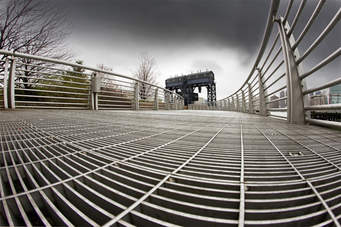
The world we live in is three dimensional. We see in three dimensions, yet when we photograph, we see only two dimensions. In order to create images that add a third dimension, we need to add some perspective or depth. The big question is what is perspective and how do we add it?
Because we can’t see a third dimension in our images, we need to create an impression that there is depth to the photograph. This is created by the relationship between elements in the image—showing the space between them and giving a sense of depth. If we can do this, then the sense of perspective is created and the third dimension is added.
TYPES OF PERSPECTIVE:
- LENS PERSPECTIVE
Your choice of lens, whether wide angle, telephoto or zoom, will determine the amount of perspective created in your photo. Although perspective doesn’t actually change, you can get the impression that it does by your choice of lens. Real depth and perspective is created by wide angle lenses with elements appearing at a greater distance from each other. Telephoto lenses compress thereby giving a more crowded feeling. So lens choice is vital to creating those images with real depth.
- LINES AND PERSPECTIVE
Parallel lines in an image fool the brain into believing that they are moving away from the viewer. Here’s how it works. Imagine looking down a row of crops or a railway line that disappears into the distance. The parallel lines never meet or touch but as they disappear an impression is given that they do. It is best illustrated when using a wide angle lens. Be sure though to include the focal point which is also known as the vanishing point, which is the point where the lines disappear into nothing.
- DIMINISHING PERSPECTIVE
Diminishing perspective of scale refers to the appearance of size that our eyes see. Take for example a row of telephone poles disappearing into the distance. Our brain tells us that they all should be the same height. But, because they are all gradually getting smaller the brain says they must be getting further apart. If you use this sense of perspective you will find it extremely effective in giving depth to your images.
- SCALE AND COMPARISON
When trying to achieve a sense of scale, choose two elements with one having a recognizable height or size.
By placing them next to a large object, such as waterfall or dam wall you get an idea of how large the wall is because you know the size of the recognizable person or object. If you know the height of the person then in relation to them the dam wall must be incredibly large.
- STRETCHING PERSPECTIVE
The lens by itself stretches the perspective naturally and this is quite dramatically increased by including an object in the foreground. When this object, which you know how large it is, is compared to something in the distance such as a building or tree, the sense of scale is increased. It reveals extreme distances and gives the image real depth. This is creates a strong impression of diminishing scale or perspective..
Photos with depth or perspective are far more dynamic and dramatic, revealing that third dimension lacking in most images. If you are able to implement this as you learn digital photography, then you are well on the way to stunning images.

Good content
LikeLiked by 1 person